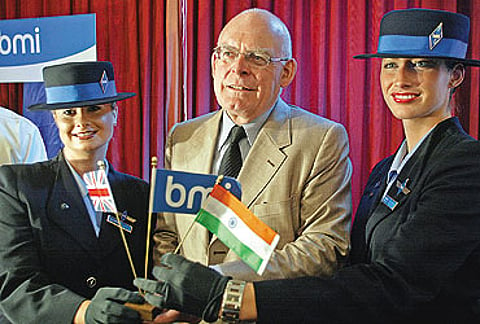For example, Jet has emerged as the businessmen carrier with 85 per cent of its revenues coming from this segment. Others like Air Deccan will stay in the volume business. "We want to ensure that air travel is like the bus service," explains Capt G.R. Gopinath, MD, Air Deccan, who’s confident that fares can go down further. The success of Air Deccan, modelled on the success of Ryanair, is proof that budget airlines can thrive. "Air Deccan has already grown from four flights a day to over 170 flights a day, connecting 42 domestic destinations," says Gopinath.
However, there are several bottlenecks, the biggest of them being the lack of adequate infrastructure. The result: congested airports and chronic delays in both departures and arrivals. The civil aviation minister experienced this first-hand in Mumbai recently, when his aircraft didn’t get permission for priority landing. "Already, it’s becoming difficult to handle peak pressures in Delhi, Mumbai and Calcutta," admits a pilot working with a private airline. The situation in smaller airports is much worse.
At various fora, Patel has stressed the need for airport modernisation projects in Mumbai and Delhi, which together account for 50 per cent of the annual traffic, followed by Chennai, Calcutta and Bangalore, which account for another 20 per cent. He also wants to build greenfield airports in Hyderabad and Bangalore, even as Mumbai is likely to get a second one. Meanwhile, the airports at the smaller cities are being spruced up to ease the traffic to the bigger cities. But it’s all been bogged down by delays, political opposition and criticism fromNGOs.
There are other concerns too. For one, the airline boom, much like the BPO and IT sectors, has led to a humongous growth in salaries. In fact, for crew members, especially pilots, it’s almost doubled. Two, the demand for trained staff and crew is enormous and experts aren’t sure whether there’s enough supply to fulfil the future requirements. Finally, the cost of aviation turbine fuel(ATF) is quite high. While ATF accounts for 15 per cent of the operating costs of airlines worldwide, the figure in India is nearly 50 per cent.
In the end, the state-owned Indian Airlines and Air-India may turn out to be the worst sufferers of this churn. Although A-I, which has increased its fleet from 26 to 42, plans to buy another 40-odd Boeings, and IA waits in the wings to refurbish its fleet, it may be too late for them. Both will suffer as foreign airlines eat into their profits from specific international routes. Private domestic airlines, which have also been allowed to ply such routes, will further dent their bottomlines. In addition, they are the ones most likely to lose trained staff to competitors. A shakeout is, therefore, imminent. But as the numerous airlines manoeuvre their way and engage in dogfights in a bid to survive, the consumer is likely to be the biggest beneficiary.
Flap Those Wings
Dropping fares, more airlines to choose. The skies are crowding up, and it's more good news for Indian fliers.

Published At:
Tags